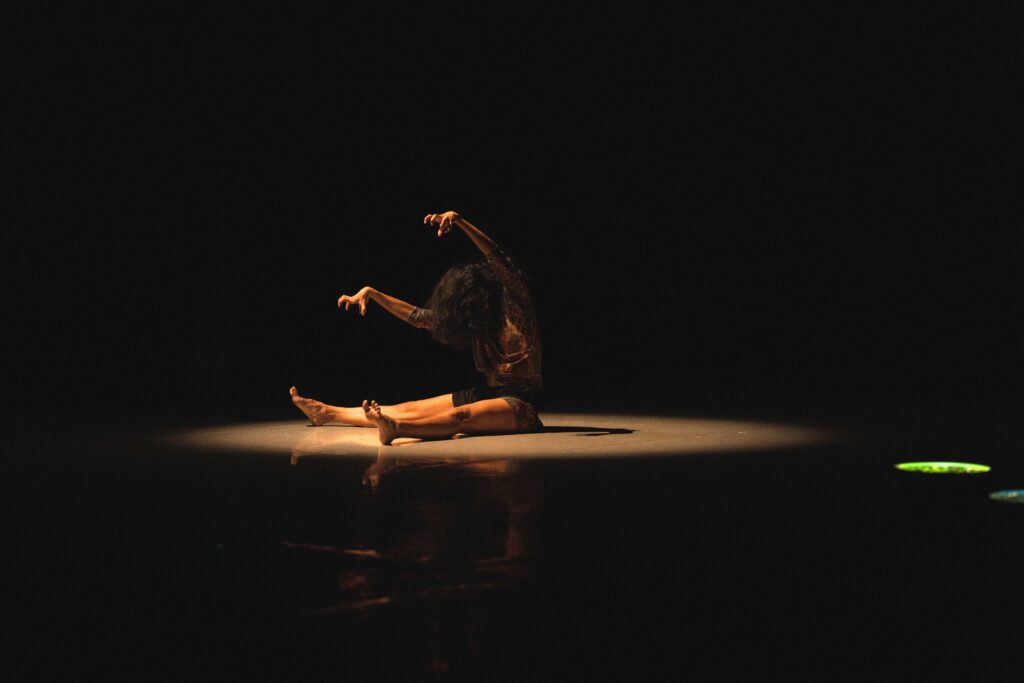The fun in watching live non-verbal performances, such as the twin-bill dance show Joy and Daloy last 27 January, starts by going inside the venue, in this case the Tanghalang Ignacio Gimenez (CCP Black Box Theater), without taking — or taking but not reading — the program. That way, you only have the basic info gleaned from the invitation, like “Joy” refers to Joy Alpuerto Ritter, a choreographer and performer based abroad, and “Daloy” (flow) is a dance company founded by dancer-choreographer Ea Torrado.
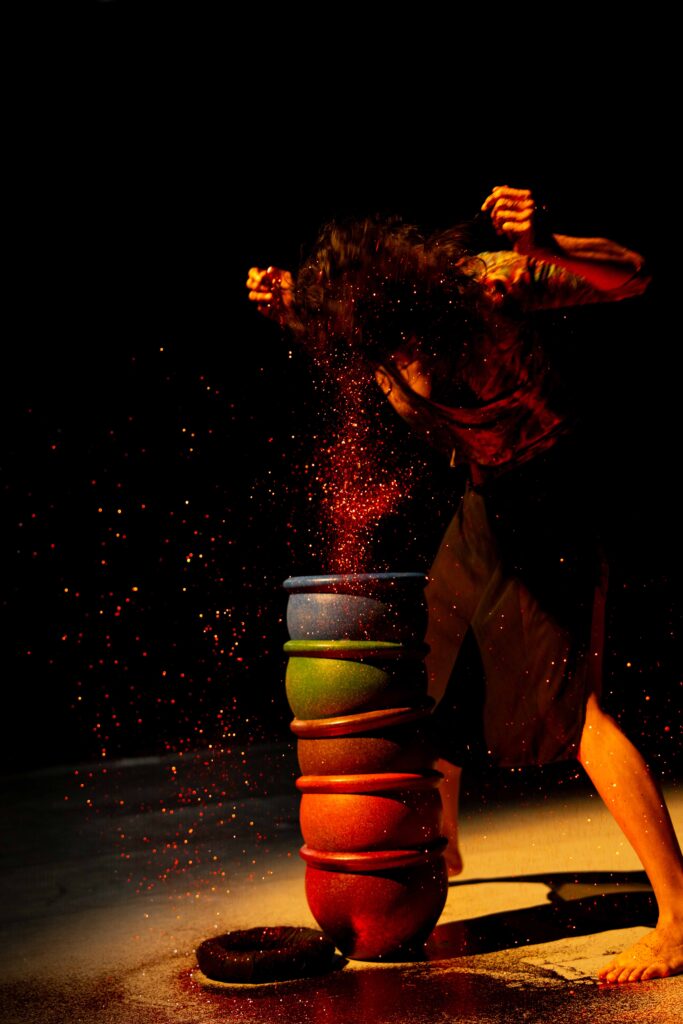
Additional details, particularly the title of each piece, Ritter’s “Babae” and Torrado’s “ItikLandia,” give a general idea of their choreographies, but the rest of the story is really just up to you as a member of the audience.
When Ritter appears on stage, wearing a bodysuit-like costume with prints appearing as tattoos and has a banga (clay jar) on her head, you are reminded of the Banga Dance that originated in the northern region. So you get that the babae (woman) in her dance narrative comes from or inspired by the Cordilleras. By the time the airplane sound effect fades, she has reached her spot on the stage, kneels and mimics putting makeup on her face.
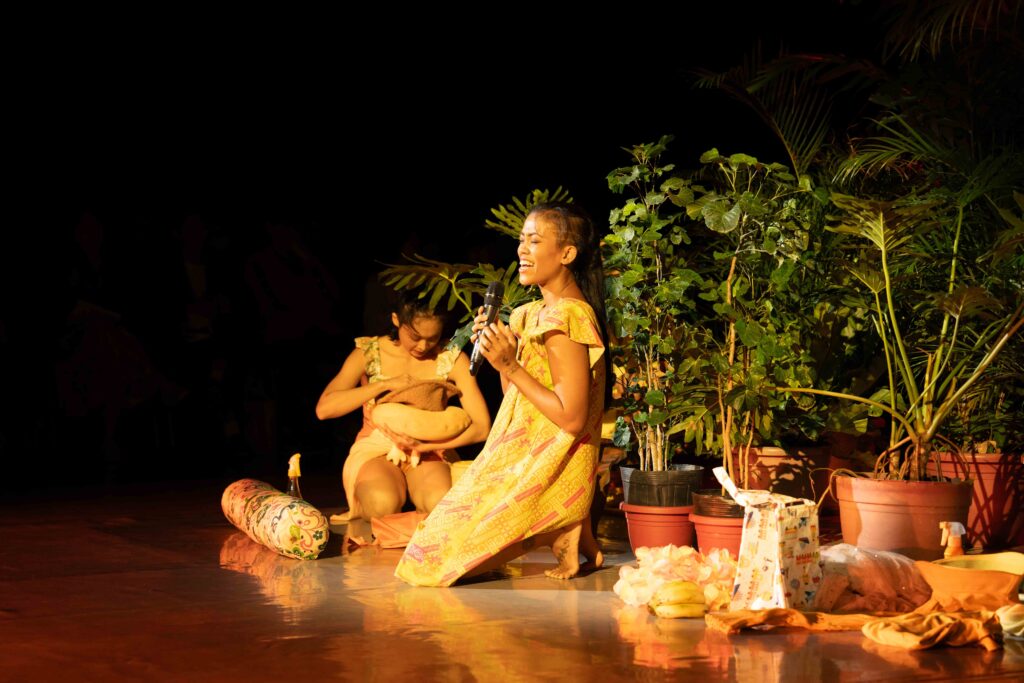
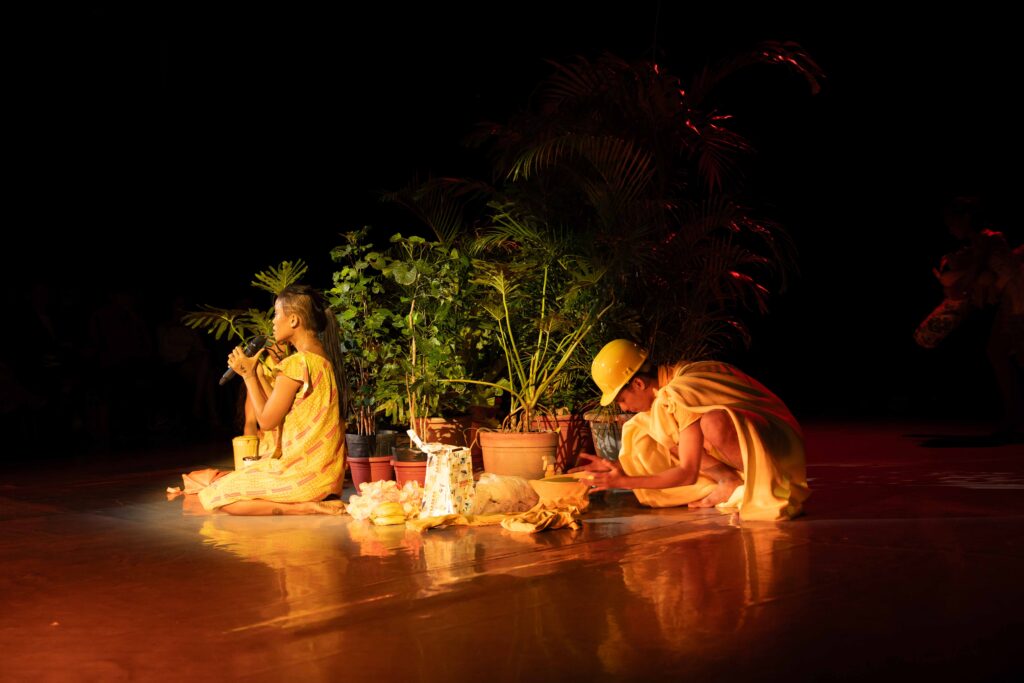
Then she starts making seemingly random and wild jerking movements sans music, as her long, lovely lines bespeak of an extensive training and productive career in dance. The woman she’s portraying seems going through a dark, trying period. At some point, a persistent drum beat is heard and the woman’s movements become more coherent, even defiant.
Towards the end, the woman gathers each of the colorful jars placed at the four corners of the stage and stacks them all on the one she has originally in front of her. She positions her face at the mouth of the topmost jar, as small reddish pieces of glittery materials fly out looking like fine embers. She starts dancing wildly again, but in definitive victory. Finally, she carries all the jars and starts moving out of the stage.
The next piece, “ItikLandia,” opens with one of the Daloy Dance Company performers (Deborah Lemuel), garbed in what looks like a yellow duster (house dress) and puts into motion a mechanical duck toy. Soon, other dancers in rag-like clothes (Julienne Depatillo, Joemarie Cruz, Brian Albano, Freyja Kapangyarihan) appear doing the Itik-Itik folk dance to an English version of the “Itik-Itik” folk song.
A narration of the Itik-Itik story follows suit and turns into a cautionary tale on environmental destruction as the duck and its family lose their home, thus taking their chances in the big city where their descendants eventually find permanent displacement, along with the urban waste and decay.
The piece turns multimedia as the dancers show off their other talents in singing and rapping like they’re in a concert, cajoling the audience to participate using mobile phone LED light. The performers also rap about inequalities in society and inefficiencies of the people in power, eliciting rapturous response from the audience.
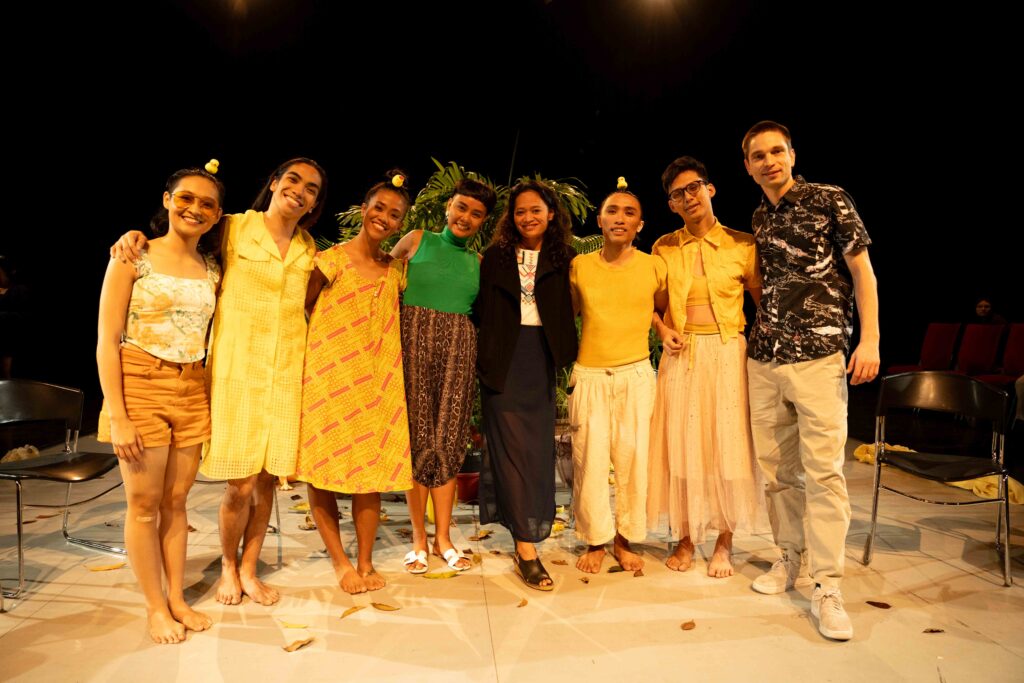
After the show, the next fun part is reading the program to see if how you perceived each piece is the same or different from the respective choreographer’s concept. Better yet, Ritter and Torrado, with the Daloy Dance Company members, participate in a talkback with the audience.
Ritter says “Babae” is inspired by the “masterpiece of strangeness” created by German expressionist dancer and choreographer Mary Wigman called “Hexentanz (Witch Dance).” Meaning, the Filipina artist based in Berlin, Germany, portrays her version of a witch, one that is imbued with indigenous elements and folklore.
Torrado explains her choice of the duck, specifically the Itik-Itik, has been made for practical reasons. One time, she was thinking up a dance exercise for the students in an international school that her dance company has taken residency and she just found the neutrality of the duck dance most suitable for all ages and nationalities. From there, she expanded the concept and developed it during the pandemic to become a full performance piece replete with musical influences and political undertones.
Whether the creators’ concepts jibed with the audience’s interpretations is not really the point as their objectives have already been met, with people leaving the theater somehow enlightened and thoroughly entertained.
